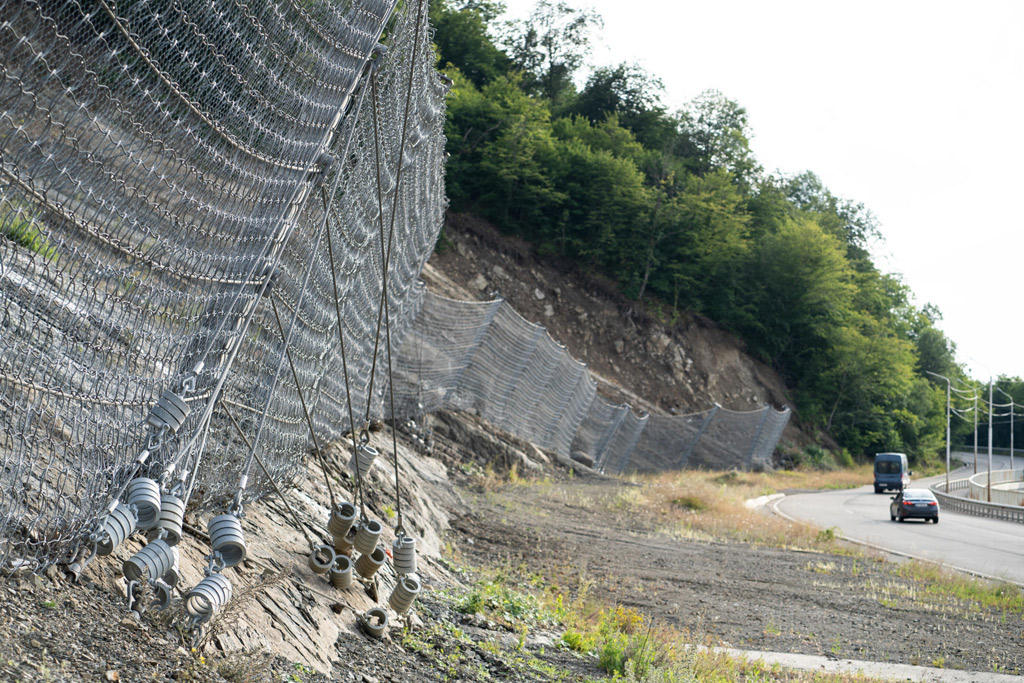Some rock slopes have an unsteady top layer that frequently needs further stabilisation. In order to boost the stability of the brittle superficial layer, we provide a variety of surface strengthening and support systems that use high strength mesh systems.
With these issues, it is essential that the chosen mesh system has strong resistance with little deflection in order to prevent the unstable surface rock mass from shifting (typically 1-1.5m3). Important elements consist of:
- The rigidity or stiffness of the face mesh
- The pressures applied to the anchors
- The mesh system’s simple installation
The ability of mesh systems to offer a uniformly active constraint to the entire slope face, sufficient to prevent the first movement of loose rock, is not possible, regardless of how stiff the mesh system is.
The plane in which a mesh is least effective at restricting movement in the actual world is perpendicular to the plane of the mesh restraint system due to uneven slopes, mobilising forces, and starting movement. The mesh doesn’t mobilise adequately until it has begun to deflect. The ability of the product to resist these early lateral pressures increases with stiffness, not height.
Our selection of high strength mesh systems features a variety of stiffnesses, strengths (up to 300kN/m), and corrosion protection options. They are extremely durable surface stabilisation and rockfall prevention products.
- High-strength steel cable panels with good rigidity.
- High tensile steel cables enhance the high resistance double twist mesh.
- The double-twisted hexagonal rockfall prevention mesh.
We provide a variety of additional methods (soil nailing, deep anchoring, etc.) to complement these surface meshes for global stability challenges.

